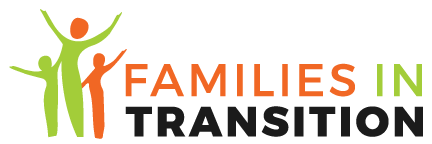Homeless Students in Duluth Public Schools
The Families in Transition Program for Duluth Public Schools has assisted homeless families and youth for 10 years. The first year the program originated, 195 students received assistance in comparison to the 500+ students served during the 2018 – 2019 school year.
The number of people who are homeless at any given time in Duluth is estimated at 300-500 persons, and shelter counts from the past six years indicate we can assume around 44% (or>132 persons) are children under the age of 18, which matches the statewide trend. According to the May 2002 quarterly report generated by the Office of Economic Opportunity on a given evening St. Louis County sheltered 225 adults and 205 children. There were 305 children and adults turned away due to lack of space. The number of children sheltered in Duluth has increased 145% and they currently represent the largest portion of shelter users in the community.
Annual Reports
2016-17 Annual Report Coming Soon
Why is the Duluth community experiencing such an increase in the number of homeless families and youth? What can we do to address this concern?
Duluth has many experienced low-income housing advocates that have a comprehensive and organized network of working with homeless people and continually review data in an attempt to answer that question. It is taking significantly longer for agencies that assist homeless families to find decent affordable housing. Unfortunately, the rental availability has shrunk to 1%. Another factor influencing families is the lack of a living wage. Families find themselves attempting to survive on fewer resources.
Almost 15 years ago, Congress passed a law giving children and youth in homeless situations the right to go to school, no matter where they live or how long they have lived there. In December of 2001, Congress made that law even stronger and titled it the McKinney-Vento Act which gives children and youth in homeless situations the right to:
Remain in their school of origin (to the extent feasible) or enroll and attend any public school that they choose including any public school that students living in the same attendance area are eligible to attend.
Enroll in school immediately, even if they do not have a parent or guardian with them or the required documents such as school records, medical records, medical records, proof of residency, or other documents.
Receive transportation to their school of origin, provided or arranged by the school district, or a joint effort among districts while they are homeless.
Receive preschool services, free or reduced school meals, services for English language learners, special education, Title I services, vocational/technical education, gifted and talented services.
Obtain a written explanation from the school district if the district refuses to send students to the school they choose and have the liaison settle such disagreements.
Meet the same high academic achievement standards as all students.
Who is considered homeless under the McKinney-Vento Act?
Under McKinney-Vento legislation, homeless children and youth that lack a fixed regular and adequate nighttime residence. The law says that a child or youth without a fixed, regular and adequate residence is homeless. It does not matter how long the child or youth has been without a home or if the child or youth is living with a parent or is separated from parents. Under the Act, students are homeless if they are:
In transitional housing, living with a friend, relative or someone else because they can’t afford a home;
Staying in a motel or hotel;
Living in an emergency or transitional shelter or a domestic violence shelter;
Living in a car, park, public place, campground, an abandoned building, bus or train station; or other place not designed for human habitation
Living in a runaway or homeless youth shelter;
In a shelter (family, individual, domestic violence, youth or temporary housing.
The program accomplishes our mission by facilitating enrollment, attendance and academic success of homeless preschool and school-aged children. Referrals to the program come from diverse sources throughout the community, such as family and youth shelters, transitional housing programs, churches, school staff, and other students and families. Our initial tasks include assessing student’s needs, accessing records, enrolling and arranging transportation. Academic success is monitored and options are explored to assist a student to successfully achieve the state standards.
Each year we face new challenges that may occur because of funding cuts or revisions in the law that affect the families and youth we assist. These same challenges then affect your school. Sometimes there are not easy or simplified answers to questions you may have regarding a homeless student you have in your school or classroom.
CHANGE A LIFE TODAY
Please contact us with questions or concerns about a student or if you’d like information shared at a staff or building meeting. Your efforts will make a difference in a homeless student’s academic progress and life.

